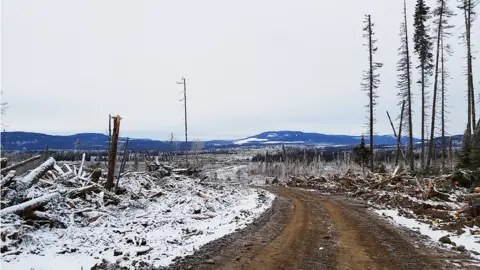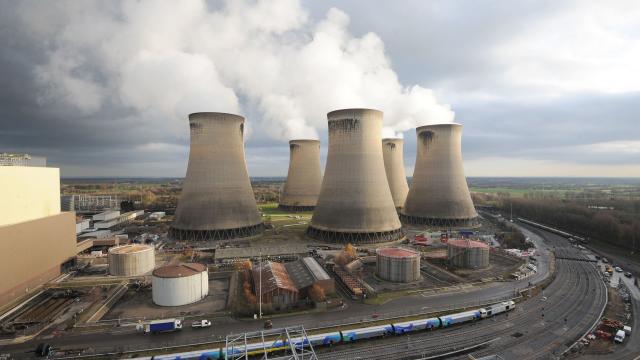A power company benefiting from £6bn in UK green subsidies has been found to burn wood from environmentally sensitive areas, according to documents obtained by the BBC’s Panorama. The papers reveal that Drax sourced timber from rare forests in Canada, despite claiming these were “no-go areas.”
This discovery comes at a time when the UK government is deciding whether to grant the Yorkshire-based site of Drax additional environmental subsidies, funded by energy consumers. Drax insists that its wood pellets are sustainably and legally harvested. The Drax Power Station, converted from a coal plant, generated about 5% of the UK’s electricity in 2023.
Drax, the owner of the power station, benefits from financial support from energy consumers since the electricity generated by burning wood pellets is considered renewable and categorized as emission-free.
In reality, the power station releases approximately 12 million tonnes of carbon annually. However, according to international regulations, the UK is not obligated to include these emissions in its calculations. All 6.5 million tonnes of wood pellets consumed by Drax annually are sourced from abroad, with a significant portion originating from Drax’s 17 pellet facilities in the US and Canada.
In a previous investigation in 2022, Panorama exposed the company’s acquisition of logging licenses in the Canadian province of British Columbia. The program also captured footage of logs being extracted from what was identified as primary forest and transported to a pellet plant owned by Drax.
Primary forests are natural forests that have not been significantly disturbed by human activity.

Drax refuted allegations of sourcing wood from primary forests but declared its decision not to seek additional logging licenses in the province. Nevertheless, the company continues to obtain entire logs from forests that have been cleared by timber firms. Documents from British Columbia’s Ministry of Forests, obtained by Panorama, reveal that in 2023, Drax acquired over 40,000 tonnes of wood from designated “old-growth” forests.
Ancient forests, designated as “old-growth” by the provincial government for their unique habitats and ecological significance, are among the world’s oldest. An illustrative case is EM807M, an 87-hectare “cut block” located 180 miles west of Prince George, a logging hub. Although a timber company possessed the license for the site, Drax, as per logging records, claimed 26% of the harvested wood.
Last winter, Drax received 130 lorry-loads of intact logs from the area, converting them into pellets, with some subsequently burned at its Yorkshire power plant. Notably, 90% of the cut block held the even more critical classification of a “priority deferral area,” reserved for old-growth forests deemed “rare, at risk, and irreplaceable” by an independent panel of experts in British Columbia.
Despite recommendations from experts to pause logging in priority deferral areas, it remains legal to harvest these forests. The provincial government of British Columbia asserts ongoing efforts to increase protection for old-growth areas. However, Drax’s use of timber from these “irreplaceable” forests appears systematic. Forestry documents reveal that in the initial nine months of the previous year, Drax obtained wood from 30 different timber marks in British Columbia, where over 25% of the forest was classified as old growth. Of these, 26 timber marks encompassed the even scarcer priority deferral areas. Timber marks, denoting wood cut under specific licenses, enabled Panorama to trace logs to Drax’s pellet mills. Overall, Drax procured approximately 55,000 cubic meters of intact logs from timber marks featuring old-growth forest, equivalent to over 1,100 large truckloads.



























